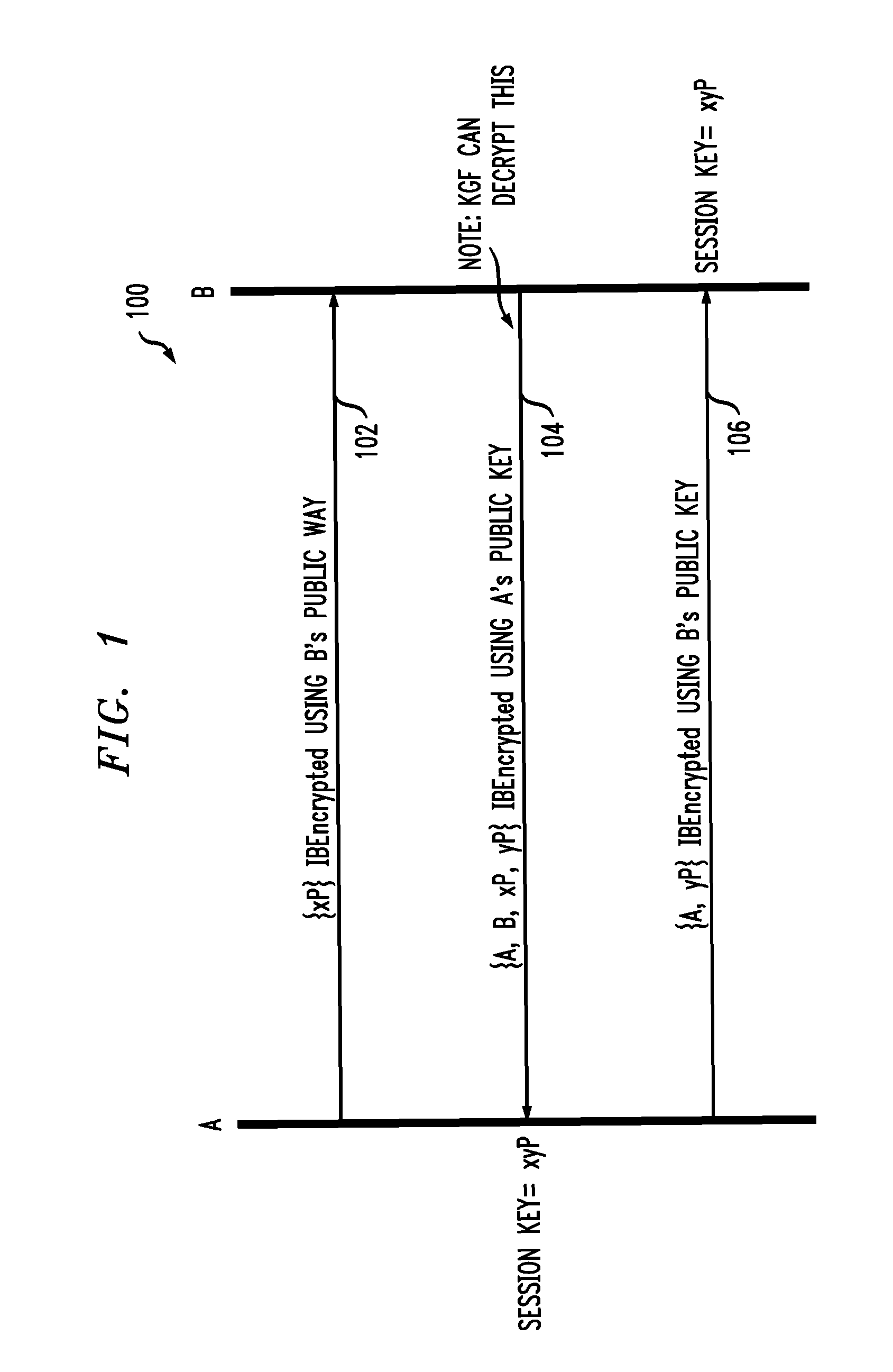Identity based authenticated key agreement protocol
a key agreement and identity technology, applied in the field of cryptography, can solve the problems of a bit more flexible public key method, a large scale public key infrastructure, and a large amount of public key resources, and achieve the effect of de-facto key escrow server and undesirable consequences
- Summary
- Abstract
- Description
- Claims
- Application Information
AI Technical Summary
Benefits of technology
Problems solved by technology
Method used
Image
Examples
Embodiment Construction
[0011]For ease of reference, the detailed description is divided as follows. An overview is provided of Identity Based Encryption (IBE) (section I). A review is provided of some examples of key agreement protocols including one involving IBE which has an inherent key escrow problem (section II). Embodiments of an improved identity based authenticated key agreement protocol according to the invention are then described in detail (section III) followed by a description of some illustrative applications (section IV). An illustrative computing system for implementing an improved identity based authenticated key agreement protocol according to the invention is then described (section V).
I. Identity Based Encryption
[0012]An Identity Based Encryption protocol was presented by Boneh and Franklin, see Dan Boneh, Matthew K. Franklin, “Identity-Based Encryption from the Weil Pairing” Advances in Cryptology—Proceedings of CRYPTO 2001 (2001), the disclosure of which is incorporated by reference ...
PUM
 Login to View More
Login to View More Abstract
Description
Claims
Application Information
 Login to View More
Login to View More - R&D
- Intellectual Property
- Life Sciences
- Materials
- Tech Scout
- Unparalleled Data Quality
- Higher Quality Content
- 60% Fewer Hallucinations
Browse by: Latest US Patents, China's latest patents, Technical Efficacy Thesaurus, Application Domain, Technology Topic, Popular Technical Reports.
© 2025 PatSnap. All rights reserved.Legal|Privacy policy|Modern Slavery Act Transparency Statement|Sitemap|About US| Contact US: help@patsnap.com



